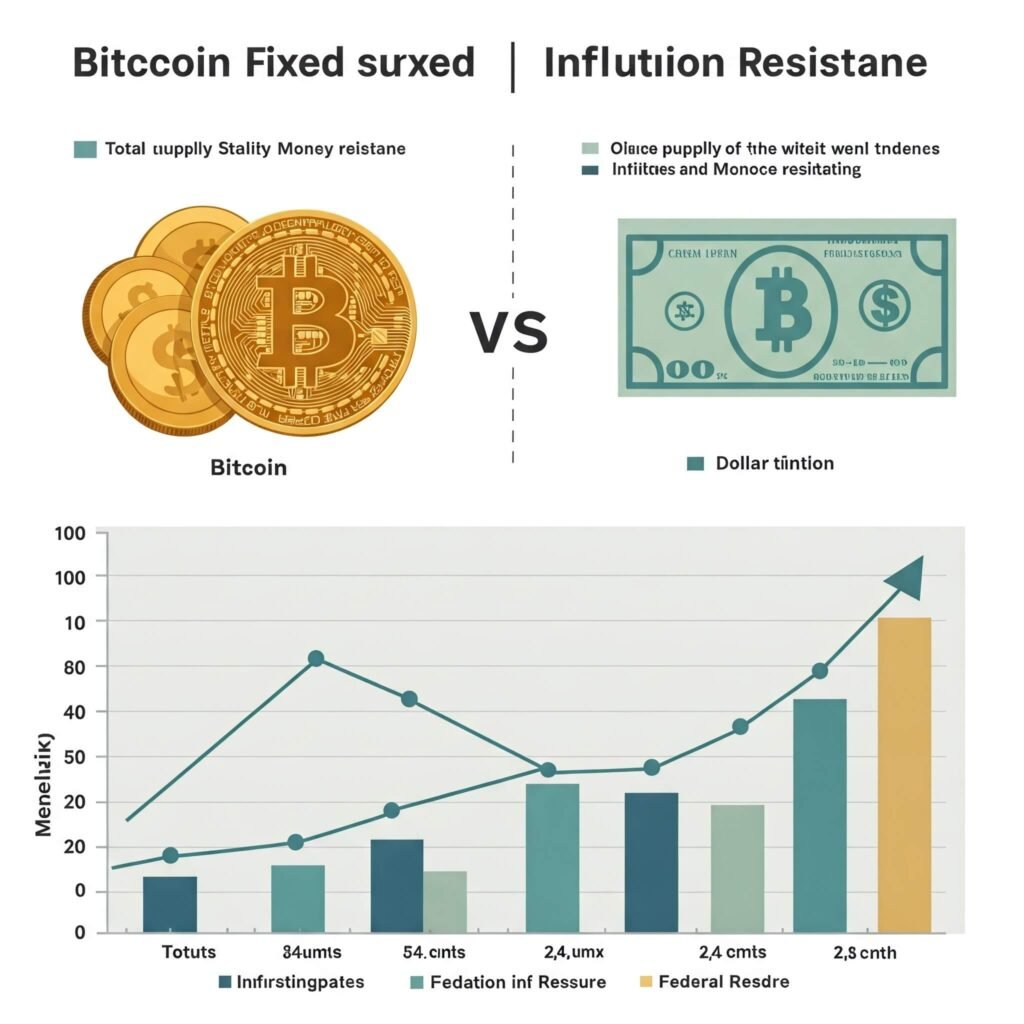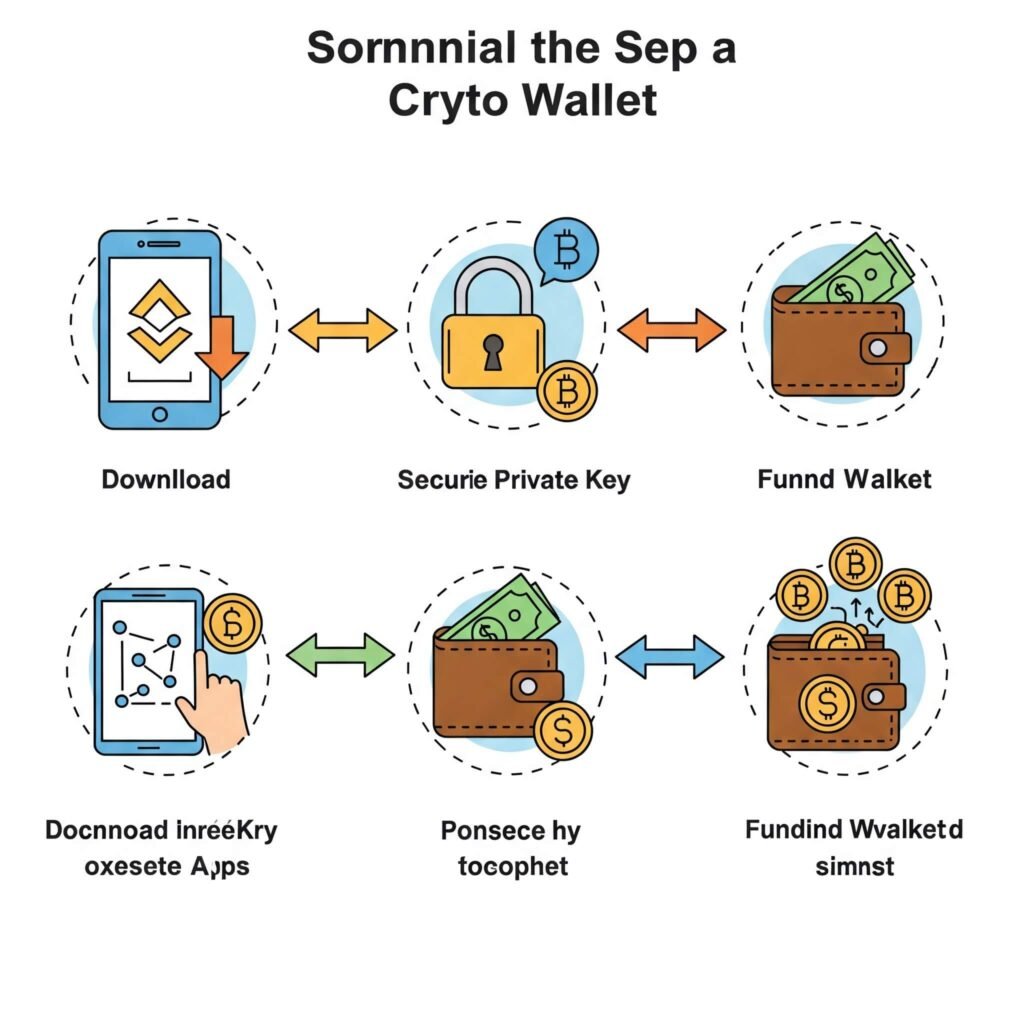Imagine a world where your morning coffee is paid for with Bitcoin, and your paycheck arrives in Ethereum. Sounds futuristic, right? Yet, with the US economy in 2025 undergoing seismic shifts, the question looms large: Is cryptocurrency replacing the dollar? As inflation, technological advancements, and decentralized finance (DeFi) reshape the financial landscape, digital currencies are no longer a niche topic for tech enthusiasts—they’re a serious contender in the future of money. This article dives into how cryptocurrencies are challenging the dollar’s dominance, what the 2025 economy means for this shift, and whether your wallet is ready for the revolution.
Why Cryptocurrency Is Gaining Ground in the US
The US dollar has long been the backbone of global finance, but cracks are showing. Inflation, rising national debt, and evolving consumer preferences are pushing people toward alternatives like cryptocurrency. Here’s why digital currencies are gaining traction:
- Inflation Hedge: With inflation hovering around 3-4% in 2025, many see cryptocurrencies like Bitcoin as a hedge, similar to gold. Bitcoin’s fixed supply (21 million coins) contrasts with the dollar’s endless printing.
- Decentralized Trust: Unlike the dollar, which is controlled by the Federal Reserve, cryptocurrencies operate on blockchain—a transparent, decentralized ledger. This appeals to younger generations wary of centralized institutions.
- Global Accessibility: Cryptocurrencies enable borderless transactions, making them ideal for freelancers, remote workers, and international businesses.
Real-World Example: In 2024, companies like Tesla and Overstock began accepting Bitcoin for purchases, signaling mainstream adoption. By 2025, smaller businesses are following suit, with crypto payment processors like BitPay reporting a 30% increase in transactions CoinDesk.

The 2025 US Economy: A Catalyst for Cryptocurrency Replacing the Dollar?
The US economy in 2025 is a mixed bag of innovation and uncertainty. Factors like rising interest rates, technological disruption, and regulatory debates are shaping whether cryptocurrency could replace the dollar. Let’s break it down:
Regulatory Shifts Open the Door
The Biden administration’s 2024 crypto regulations, including clearer tax guidelines, have legitimized digital currencies. By 2025, the SEC is expected to approve more crypto ETFs, making it easier for everyday investors to dive in. This regulatory clarity is a double-edged sword—it boosts adoption but could limit DeFi’s “wild west” appeal.
Stablecoins: The Dollar’s Crypto Rival
Stablecoins like USDC and Tether, pegged to the dollar, are bridging the gap between fiat and crypto. In 2025, stablecoin transactions are projected to hit $2 trillion annually, per Forbes. They offer the dollar’s stability with blockchain’s efficiency, making them a strong contender for everyday use.
The Federal Reserve’s Response
The Fed’s exploration of a Central Bank Digital Currency (CBDC) shows it’s not sitting idly by. A digital dollar could compete with private cryptocurrencies, but its centralized nature might deter crypto purists. According to a 2024 Federal Reserve report, 60% of Americans are open to a CBDC Federal Reserve.
Takeaway: The 2025 economy is a battleground for money’s future. Cryptocurrency’s rise depends on how regulators, consumers, and institutions balance innovation with control.

Challenges to Cryptocurrency Replacing the Dollar
Despite its momentum, cryptocurrency faces hurdles in overtaking the dollar:
- Volatility: Bitcoin’s price swings (e.g., $60,000 to $80,000 in 2024) make it risky for everyday transactions.
- Scalability: Blockchain networks like Ethereum struggle with high fees and slow transaction speeds during peak demand.
- Public Perception: Many Americans still view crypto as speculative or tied to scams, per a 2024 Pew Research survey.
- Regulatory Uncertainty: While progress has been made, global coordination on crypto laws remains inconsistent.
Example: In 2024, a major crypto exchange faced a $4 billion fine for non-compliance, shaking consumer confidence Reuters. This highlights the need for robust regulations to build trust.
How to Prepare for the Future of Money
Whether cryptocurrency replaces the dollar or coexists with it, 2025 is a pivotal year. Here’s how you can stay ahead:
- Educate Yourself: Learn the basics of blockchain and crypto wallets. Platforms like Coinbase offer free courses.
- Diversify Investments: Consider allocating 5-10% of your portfolio to crypto, balancing risk with stablecoins and Bitcoin.
- Use Crypto Payments: Experiment with crypto for small purchases via apps like Cash App or PayPal, which now support Bitcoin.
- Stay Informed: Follow regulatory updates on sites like CoinTelegraph to anticipate market shifts.
Pro Tip: Set up a crypto wallet like MetaMask to securely store digital assets. It’s your first step into the decentralized economy.

Conclusion: The Dollar vs. Cryptocurrency in 2025
So, is cryptocurrency replacing the dollar? Not yet—but it’s closer than ever. The 2025 US economy, with its blend of innovation, regulation, and consumer demand, is paving the way for digital currencies to challenge the dollar’s throne. While hurdles like volatility and scalability remain, the rise of stablecoins, blockchain adoption, and regulatory clarity signal a financial revolution. Whether you’re a crypto skeptic or enthusiast, one thing’s clear: the future of money is evolving, and it’s time to pay attention.
Call to Action: What’s your take on cryptocurrency replacing the dollar? Drop a comment below or share this post to spark the conversation!





























